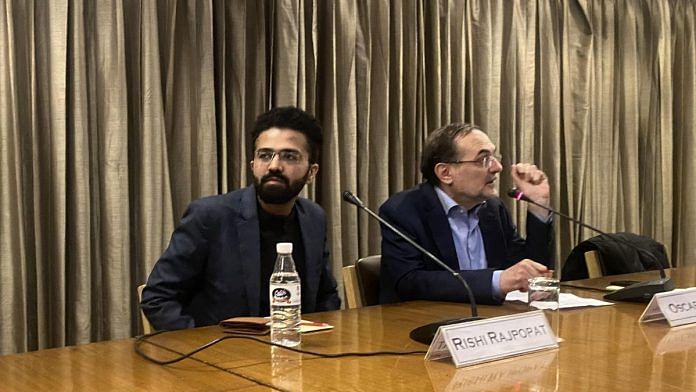When Rishi Rajpopat—a young researcher from the University of St Andrews in Scotland—came to Delhi to talk about his pathbreaking solution to the 2,500-year-old Sanskrit grammar puzzle posed by ancient scholar Panini, not many turned up. And among those who did, most were sceptics who couldn’t entirely get behind his ‘miraculous’ work.
“Your research is similar to what IIT-Kanpur has been doing,” a woman huffed, while another grilled Rajpopat for “not responding” to critics of his work.
“If there are technical rebuttals, those are the ones that really merit a response, because others are generic proclamations and tall statements, many of which come from a position of absolutely no familiarity with my work,” Rajpopat said coolly at the India International Centre (IIC) on 24 January.
May I speak to professor Panini, please?
Decoding Panini’s Ashtadhyayi—a set of 4,000 labyrinthine rules to form new words from root words in Sanskrit—is by no means a small feat. After all, scholar after scholar, from Katyayana in 300 BC to Patanjali in 150 BC, have tried. Only Rajpopat, a 21st-century researcher with a Sanskrit Studies PhD from the University of Cambridge, could come close to understanding the linguist’s confounding ‘meta rule’ to form new words.
“A lot of our secular and sacred literature from the ancient, medieval to modern period is in Sanskrit…I believe many mysteries of this nature need solving, and I think who better than Indians to solve them.. everyone should learn [Sanskrit], and everyone should be encouraged,” Rajpopat told ThePrint.
Interestingly, even his co-host, Sanskrit scholar Oscar Pujol, along with audience member and author Sudha Gopalakrishnan, jumped in with insights on the importance of such research.
“Take the concept of mindfulness, which is [now a] Western concept. What about new logic, the study of the mind, and Yoga? I still believe there is a lot to uncover from Sanskrit commentaries that are relevant to social science,” Pujol told ThePrint as Gopalakrishnan stressed the importance of the “vast knowledge network” created by Sanskritic texts.
Titled ‘May I speak to Professor Panini, Please?’, the talk was part of the Kriti-SAMHiTA lecture series. It is part of a larger project called SAMHiTA (South Asian Manuscript Histories and Textual Archives), started by the IIC in 2020 with the Ministry of External Affairs’ support. The project, spearheaded by Gopalakrishnan, aims to digitise ancient palm-leaf manuscripts and make them accessible to researchers in the form of an online database.
Also read: AS Dulat, scotch, poetry and romance—celebrating the shadowy world of a spy
Unearthing the process
Rajpopat recalled the process behind his gruelling research, delving deep into all that helped him crack the code.
“So, I took a month-long break [before my research] during which I had nothing to do with Panini. I was cooking, swimming, cycling around, meditating, and praying, because there comes a time when you ask god for little things here and there, like this book and this laptop. Other times you ask for bigger things, like save my PhD,” he quipped, adding that it was only after he begrudgingly returned from this break that he noticed this: When two rules apply to two different items—one to the root and the other to the suffix—the rule applicable to the suffix, i.e. to the right-hand side, wins.
“Panini’s Ashtadhyayi is not the kind of book you purchase when teaching yourself a second language as an adult. You dive into it knowing Sanskrit, and that’s the beauty of it. It is the creative enterprise of a genius, of a very serious theoretical linguist who set out to achieve something extraordinary, and that achievement remains unparalleled to this day,” added Rajpopat, in tribute to the subject of his research.



